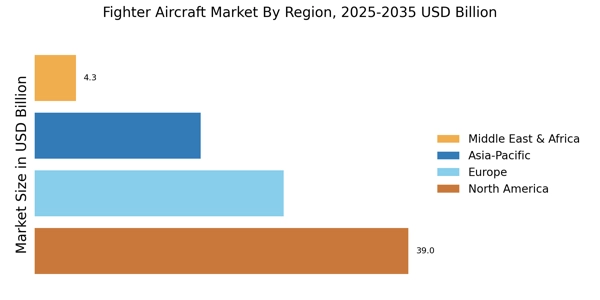The Global Fighter Aircraft Market is characterized by intense competition among various players aiming to enhance their technological capabilities and expand their market reach. This segment has grown due to ongoing geopolitical tensions, modernization of air forces, and the demand for advanced aerial combat solutions.
Fighter aircraft manufacturers are constantly innovating, focusing on stealth technology, advanced avionics, and multi-role capabilities. Government contracts and international partnerships play a crucial role in determining the competitive landscape as nations look to bolster their defense programs in response to emerging threats.
The emphasis on indigenous production and local collaborations has also affected market dynamics, making it essential for companies to develop robust strategies to maintain a competitive edge. Leonardo has established a significant presence in the Global Fighter Aircraft Market through its dedication to advanced aerospace technology and innovation.
The company leverages its expertise in producing electronic warfare systems and avionics to enhance its fighter aircraft offerings. Leonardo’s strong focus on research and development has enabled it to integrate cutting-edge technologies, positioning its fighter jets as reliable and efficient options for air forces around the globe.
The firm’s collaborative efforts with various governments and other defense contractors have further strengthened its market position, ensuring that it meets the evolving demands of military aviation.
Additionally, Leonardo's commitment to sustainability and energy efficiency in its aircraft has attracted attention from nations seeking to modernize their fleets with environmentally conscious solutions, giving it an advantage in competitive bidding scenarios.
Sukhoi, a prominent player in the Global Fighter Aircraft Market, is well-regarded for its advanced design and engineering capabilities. The company has a rich history of producing some of the most sophisticated fighter aircraft, characterized by exceptional performance and state-of-the-art technology.
Sukhoi's fighters are recognized for their agility, speed, and multi-role capabilities, appealing to various air force requirements around the world. The brand's strong legacy and reputation for reliability have allowed it to secure numerous contracts and partnerships with countries looking to upgrade their military capabilities.
Furthermore, Sukhoi's focus on indigenous production and collaboration with local defense industries enhances its competitiveness in global markets, ensuring it remains a key contender amid the ever-evolving landscape of the fighter aircraft sector. The company’s innovative approaches and strategic investments in next-generation technologies continue to solidify its status as a leader in military aviation.


















Leave a Comment